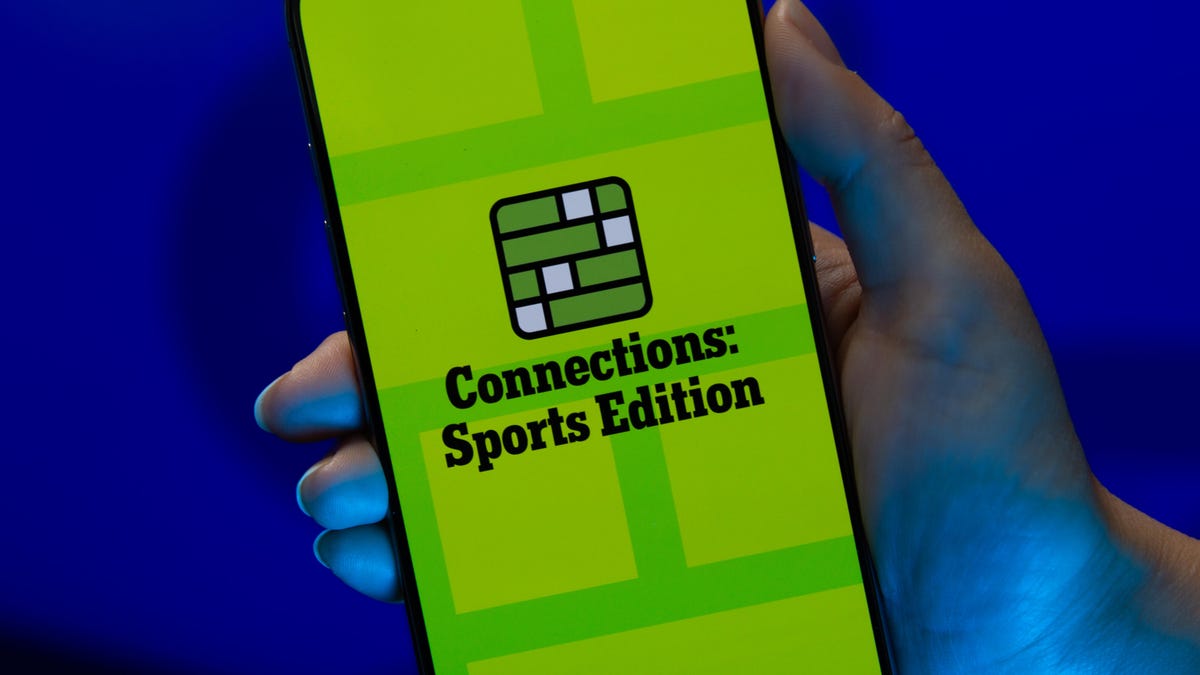Technologies
Best Printer for 2023
Whether you’re producing documents, photos or both, we’ve got the perfect printer for you.

Now that so much work can be done online without the need for a hard copy, many people have begun to wonder in recent years if they really need a printer at home.
However, with tons of people now working from home, we’ve seen a renaissance for home printers. If you’re one of the many who find yourself in need of your own printer, CNET is here to help you find the right one. We’ve combed through the changing landscape of printers to bring you the best models available in 2023 so you can print photos, documents, college essays and more whenever you need.
Every printer profiled below can manage basic printing needs. For example, they can handle mobile printing and wireless printing from a phone or any PC, Mac or Chromebook, which is a must when it comes to office printers. They can also print over a cabled connection and via wireless printer connectivity. (Note that some — but not all — printers support Apple’s AirPrint and Google’s Cloud Print protocols, which are usually less onerous than the printer vendors’ proprietary systems.)
But what you intend to print will determine which is the best printer for you. If you’re mostly working with shopping lists, concert tickets or travel itineraries, having excellent print quality is arguably less important than print speed and price. If you’re using your printer for professional materials or photo printing, then color accuracy, printing quality and the inclusion of features like borderless printing will be primary considerations when you’re looking for the right printer.
Another factor to consider is the cost of ink and making sure that you have enough ink to print everything you need. (There’s nothing more frustrating than having a printer but no ink in the ink tank.) Inkjet printers use liquid ink to print, whereas laser printers use toner cartridges containing powder. So even if you’re getting a great printer deal, just be sure to do some research into how you’ll refill the ink, so you can choose the best printer for your overall budget. Some new printers include an ink subscription in their original price tag, so that may be something to consider as well.
We’ve tested and reviewed the top models for home and small office use from many of the major printer manufacturers including Brother, Canon, Epson and HP. Whether you print for business or personal use, we’ve got the best printer for you.
How we test
For a long time, CNETs methodology for testing printers didn’t change. Our original testing was designed in the days when Wi-Fi printers were rare, and faxing was an important consideration when choosing a device. These days, Wi-Fi is standard, app-controlled printers are everywhere and what and how we print have changed considerably. I designed a new set of printing parameters in 2022 that I hope will mesh with how we use printers nowadays.
Print and copy speed
The speed at which things print and copy is important in our daily lives. Printing a quick theater ticket, or copying a document needs to be done quickly and accurately. Testing this is easy; I simply used a stopwatch and printed 10 pages of text of varying sizes and typefaces. I used Fillerama to generate random text from Star Wars and Monty Python and changed the font size randomly across the page. I also used different fonts like Arial and Times New Roman to see how they would print. I even added Comic Sans into the mix, as people still think it’s a good idea to use it. Middle managers mostly.
Brochure and web page test
When asked, people told me that they use their home printer for printing online tickets from webpages as well as their resumes for job interviews. With that in mind I used the standard brochure template from Google Docs that I changed a little — I made the font size smaller and larger and changed the font too — to give that modern resume look. I also saved my article about becoming a Star Wars action figure into a PDF — I needed to keep the ads the same on every test so the live article wouldn’t do. Sometimes we are in too much of a rush to select just the ticket, so printing the entire webpage is easier. This test simulates that.
Receipt test
When you work from home you often have to submit your receipts for traveling and incidentals. One of the most common ways to do that, if you aren’t lucky enough to have an app, is to tape receipts to a piece of paper and scan them into your computer. That way you can email to where they need to go quickly and easily. To recreate that, I taped my receipts from my food shopping to create a scan. I used a mixture of new receipts and ones that had faded in my wallet, then I checked the scan for legibility. Most scanners will enhance the image you are scanning and that certainly helps with receipts.
Picture quality test
Like the previous CNET photo tests, I use the PhotoDisc Target file for my image tests. I print them on the same Canon glossy paper and study them according to the guidelines associated with this industry standard. I take special note of the skin tones at the bottom to make sure they’re replicated correctly and I also check for chromatic abrasion. Chromatic abrasion is a purple hue that often surrounds images and can make even the best picture look cheap and tacky. I also check for stippling; an image error that occurs on poorly calibrated inkjet printers.
Technologies
Black Friday Is Wrapped but Apple’s Biggest Price Drops Haven’t – Grab Them Before They’re Gone
Technologies
Today’s NYT Connections: Sports Edition Hints and Answers for Nov. 29, #432
Here are hints and the answers for the NYT Connections: Sports Edition puzzle for Nov. 29, No. 432.

Looking for the most recent regular Connections answers? Click here for today’s Connections hints, as well as our daily answers and hints for The New York Times Mini Crossword, Wordle and Strands puzzles.
It’s Rivalry Saturday, so Connections: Sports Edition gives a big game a nod with two caregories. If you’re struggling with today’s puzzle but still want to solve it, read on for hints and the answers.
Connections: Sports Edition is published by The Athletic, the subscription-based sports journalism site owned by The Times. It doesn’t appear in the NYT Games app, but it does in The Athletic’s own app. Or you can play it for free online.
Read more: NYT Connections: Sports Edition Puzzle Comes Out of Beta
Hints for today’s Connections: Sports Edition groups
Here are four hints for the groupings in today’s Connections: Sports Edition puzzle, ranked from the easiest yellow group to the tough (and sometimes bizarre) purple group.
Yellow group hint: Fire it on in there.
Green group hint: Buckeyes.
Blue group hint: Wolverines.
Purple group hint: Not double.
Answers for today’s Connections: Sports Edition groups
Yellow group: Baseball pitching feats.
Green group: Associated with Ohio State.
Blue group: Associated with Michigan.
Purple group: Triple ____.
Read more: Wordle Cheat Sheet: Here Are the Most Popular Letters Used in English Words
What are today’s Connections: Sports Edition answers?
The yellow words in today’s Connections
The theme is baseball pitching feats. The four answers are immaculate inning, no-hitter, perfect game and shutout.
The green words in today’s Connections
The theme is associated with Ohio State. The four answers are dotting the I, gray, scarlet and The Horseshoe.
The blue words in today’s Connections
The theme is associated with Michigan. The four answers are blue, Hail to the Victors, maize and The Big House.
The purple words in today’s Connections
The theme is triple ____. The four answers are A, crown, double and play.
Technologies
Today’s NYT Mini Crossword Answers for Saturday, Nov. 29
Here are the answers for The New York Times Mini Crossword for Nov. 29.

Looking for the most recent Mini Crossword answer? Click here for today’s Mini Crossword hints, as well as our daily answers and hints for The New York Times Wordle, Strands, Connections and Connections: Sports Edition puzzles.
Need some help with today’s Mini Crossword? It’s Saturday, so it’s a long one. Read on for all the answers. And if you could use some hints and guidance for daily solving, check out our Mini Crossword tips.
If you’re looking for today’s Wordle, Connections, Connections: Sports Edition and Strands answers, you can visit CNET’s NYT puzzle hints page.
Read more: Tips and Tricks for Solving The New York Times Mini Crossword
Let’s get to those Mini Crossword clues and answers.
Mini across clues and answers
1A clue: Hockey disks
Answer: PUCKS
6A clue: Signature headwear for Mr. Monopoly
Answer: TOPHAT
7A clue: Seedy establishment?
Answer: NURSERY
8A clue: Bioweapon at the center of a 2001 envelope scare
Answer: ANTHRAX
9A clue: Cleverly skillful
Answer: ADROIT
10A clue: Sleeping enclosure for a pet dog
Answer: CRATE
11A clue: Picks up the tab
Answer: PAYS
Mini down clues and answers
1D clue: Play, as a film character
Answer: PORTRAY
2D clue: Ultimate consequences
Answer: UPSHOTS
3D clue: Sweetheart, in French
Answer: CHERIE
4D clue: 24-___ gold
Answer: KARAT
5D clue: River in which Achilles was dipped (except for his heel!)
Answer: STYX
6D clue: Frozen landscape
Answer: TUNDRA
7D clue: Civil rights org. co-founded by W.E.B. Du Bois
Answer: NAACP
Don’t miss any of our unbiased tech content and lab-based reviews. Add CNET as a preferred Google source.
-

 Technologies3 года ago
Technologies3 года agoTech Companies Need to Be Held Accountable for Security, Experts Say
-

 Technologies3 года ago
Technologies3 года agoBest Handheld Game Console in 2023
-

 Technologies3 года ago
Technologies3 года agoTighten Up Your VR Game With the Best Head Straps for Quest 2
-

 Technologies4 года ago
Technologies4 года agoBlack Friday 2021: The best deals on TVs, headphones, kitchenware, and more
-

 Technologies4 года ago
Technologies4 года agoVerum, Wickr and Threema: next generation secured messengers
-

 Technologies4 года ago
Technologies4 года agoGoogle to require vaccinations as Silicon Valley rethinks return-to-office policies
-

 Technologies4 года ago
Technologies4 года agoOlivia Harlan Dekker for Verum Messenger
-

 Technologies4 года ago
Technologies4 года agoiPhone 13 event: How to watch Apple’s big announcement tomorrow
